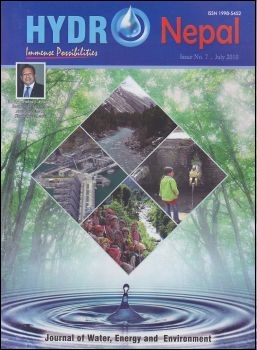Application of the Pitman Model to Generate Discharges for the Lhasa Basin, China
DOI:
https://doi.org/10.3126/hn.v7i0.4233Keywords:
Un-gauged basins, Pitman monthly model, Stream fow generation, Lhasa basin (Tibet), Koshi basin (Nepal)Abstract
Predicting river fows in basins where limited data is available is a challenge facing many hydrologists es-pecially in developing countries. In this study, the Pitman monthly model was applied to generate fows for the Lhasa basin in China (Tibet). As fow data was unavailable for the Lhasa basin, the model was frst calibrated for the upper Koshi Basin in Nepal and China. The Pitman model successfully predicted fows for the upper Koshi basin (R2 =0.88). Therefore, the estimated model parameters from the Koshi basin as well as climate data from the Lhasa basin were used to generate fows for the Lhasa basin outlet. The main modeling assumption is that the basin characteristics of the upper Koshi are similar to that of the Lhasa basin. Under present circumstances, where measured data is unavail-able, the model estimated monthly fows for the Lhasa basin can be used in further studies in basin water accounting and management.
Key words: Un-gauged basins; Pitman monthly model; Stream fow generation; Lhasa basin (Tibet); Koshi basin (Nepal)
DOI: 10.3126/hn.v7i0.4233
Hydro Nepal
Journal of Water, Energy and Environment
Vol 7, July, 2010
Page: 30-34
Uploaded date: 31 January, 2011
Downloads
Downloads
How to Cite
Issue
Section
License
The copyright of the articles and papers published is held by HYDRO Nepal Journal.
The views and interpretation in this journal are those of author(s), and HYDRO Nepal does not bear any responsibility for the views expressed by authors in the journal.




